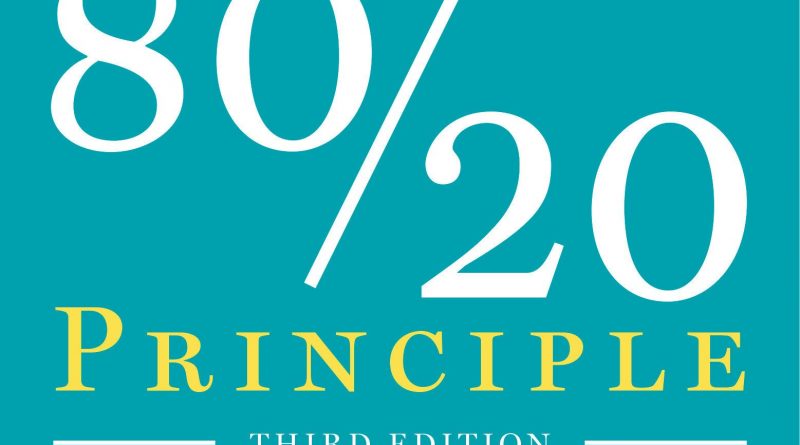The 80/20 Rule Explained
The 80/20 rule is also known as Pareto’s Law. which states that roughly 80% of the results come from 20% of the causes. This law applies in many areas of life, including business, education, and personal development.In all areas of life, 20% of inputs, efforts, and causes result in 80% of outputs, outcomes, and consequences. Richard Koch was the first to publish a book outlining how people and organisations may use the 80/20 Rule to get considerably more done with a lot less work. Here is an overview of the 80/20 Principle that explains how it functions and how you may use it to increase your output and happiness.
For full details, Paperback version can be purchased from Amazon and softcopy of this book can be found here. For more book summary, read my secion Book Reviews.
What is 80/20 Principal?
According to the 80/20 Rule, a small number of factors or inputs will account for the majority of your results or outputs. Vilfredo Pareto, an economist, discovered the idea in 1897, and it gained popularity after World War II. It’s also referred to as the Pareto Law, the Law of the Critical Few. The 80:20 Rule, the Principle of Least Effort, the Principle of Imbalance, the Pareto Principle. The Pareto Law, and the Principle of Factor Sparsity in modern times.
It’s possible that the ratio won’t always be 80:20; for example, it might be more imbalanced at 90:10 or less imbalanced at 60:40. The essential concept is that input and output, effort and outcomes, and causes and consequences frequently have non-linear relationships. In business, 20% of our items or customers often account for 80% of our revenue.
How to Apply 80/20 Principal
According to the 80/20 Rule, there is a great of inefficiency all around us. But there is also a lot of room for improvement. Here are some broad pointers for applying the 80/20 Rule:
Compare your top 20% to your bottom 80%.
You can accomplish this using either a more analytical or an intuitive approach:
• 80/20 Analysis: Formulate a hypothesis on an 80-20 relationship. Then test it by gathering and contrasting two sets of data. For instance, to determine what proportion of your mates consume the most of the beer. Ask 100 friends how much beer they consumed the prior week and then rank the information in decreasing order. Perhaps 15% of your friends consumed 90% of the beer.
• 80/20 Thinking: Consider a significant question in-depth, intuitively establish your 80-20 hypothesis, then put it into practice.
Reallocate your resources and time in two ways
• Move time and resources away from the ineffective 80% in order to provide more to the top 20%. Do more of what is effective.
• Find solutions to increase the productivity or effectiveness of the unproductive activities in order to address the underperforming 80%.
The 80/20 Rule in Life and Business
In any industry, 80% of the surpluses or profits are made by 20% of the market participants. 20% of these market sectors, 20% of customers, 20% of items, and 20% of staff will produce 80% of these surpluses. 20% of employees’ efforts will also contribute 80% of their value. In our daily lives, 80% of our success is the result of 20% of our work, 80% of our happiness is the result of 20% of our experiences.




I agree with your point of view, your article has given me a lot of help and benefited me a lot. Thanks. Hope you continue to write such excellent articles.